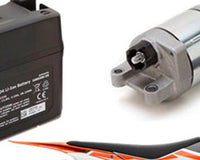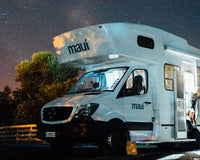Tips on how to pick the right rechargeable battery for your device have been around the web since chargers and rechargeable batteries exist. Yet, most people still get wrong in choosing the right batteries. So, here in this article, I’m going to give you the most basic ideas yet comprehensive and compact ones to help you fully understand what, why, and how to select your perfect rechargeable batteries in optimizing the performance of your devices.
CHOOSING RECHARGEABLE BATTERIES - THE FACTORS TO CONSIDER
Here are the major factors for choosing the right rechargeable battery for your device.
- Battery Chemistry
- Power and Energy
- Voltage
- Temperature
- Shelf Life
- Legal Requirements
- Priorities and Compromise Regarding Product Features
- Cost/Budget
Understanding Rechargeable Battery Chemistries
Knowing your specific device’s rechargeable battery chemistry is a crucial step in selecting the right battery. Rechargeable batteries have 3 main types and these depend on battery chemistries. These include Nickel Metal Hydride (NIMH), Nickel Cadmium (NiCad), and Lithium-ion (Li-ion).
Nickel Metal Hydride (NiMH)
NiMH batteriesare popular these days for its battery capacity and the ability to be discharged and charged back for up to 1000 times. These batteries are always in full capacity throughout its respective battery life. Nickel Metal Hydride (NiMH) batteries and NiMH battery chargers are widely available in stores and even online.
Lithium-ion (Li-ion)
Lithium-ion batteries are also good rechargeable batteries commonly used in small household electronics, mobile devices, other applications. However, these rechargeable batteries are not widely available than NiMH batteries. Li-ion battery chargers are also hard to find in most stores. Special chargers are used for this battery type. Memory and full voltage issues have been cleared with this battery chemistry. Except for its 9V size, most Lithium-ion rechargeable batteries are not available in standard voltage. AA rechargeable battery, AAA, C, and D Li-ion rechargeable batteries have 3.7V, not 1.5V.
Nickel Cadmium (NiCad or NiCd)
NiCad/NiCd batteries suffer from memory issues due to its older technology. The NiCD or NiCad battery exhibits a lower voltage compared to Li-ion and NiMH batteries. These batteries can be charged once a day for up to three years and cycled for a maximum of 1000 times.

Power and Energy
Looking at the battery’s energy content will help you in comparing batteries of different chemistries. To get the battery energy in Wh, multiply the battery’s voltage by its capacity in Ah. Thus, if you compare a 3.2V Li-ion battery with a 1.2V NiMH battery, this gives you the same capacity. However, the higher the voltage of the Li-ion battery yields increased energy.
Battery capacity is often set by battery manufacturers in terms of cut-off voltage, temperature, and given discharge rate. Look at the battery’s drain rate. Even if the specified battery capacity is higher than another battery, it may not perform well if the application’s drain rate is also higher.
High power batteries have high discharge capabilities at high drain rates in such applications as the automobile starter battery and power tools. The typical rule is that batteries of a higher power are quite low in terms of energy densities.
Voltage
The voltage of a battery is defined by the electrode used. NiMH, Zinc Carbon, and Lead Acid batteries use water-based electrolytes. These batteries have a nominal voltage that ranges from 1.2V -2V. On one hand, Lithium-based batteries with nominal voltages ranging from 3.2 to 4V. Since most electronic components operate 3V, Lithium-based batteries’ higher voltage allows the use of just a single, instead of two or three cells in other chemistries. Another thing to note is that Zinc Mn02’s sloping discharge curve also affects cut-off voltage.
Temperature
This factor is also defined by battery chemistry. For instance, Lithium-ion batteries have charge capability within the temperature range of 20° to 45°C. If the temperature is below 5° or 10°C trickle charging may be required to keep the battery from having a dendritic plating problem. However, this increases the thermal runaway risk. Thus, a battery explosion occurs when there is contaminant short-circuiting, high or low-temperature charging, and overcharging.
Physical Size/Shape
Batteries come as coin/button cells, cylindrical, prismatic, pouch type cells. These have standard battery sizes and technical names based on ANSI or IEC and other parameters.
Shelf Life
Although shelf life is more important to primary batteries than to the rechargeable batteries, this factor is still considered by most rechargeable battery users. Lithium-based batteries are highly preferred as these can have a shelf life that ranges from 7 to 15 years.
Legal Requirements
Depending on the battery chemistry or other related factors, some batteries have specific legislative restrictions. Lithium-ion batteries, for instance, are not allowed to be transported by air or by road until further the formal testing has been done. The batteries also need to meet technical certifications as the CE certification to meet the appropriate functional and quality requirements. Formal testing and design considerations in meeting such certifications are required. It is best to look for these certifications and legal conditions in the battery specifications when selecting the right batteries for your device.

Priorities and Compromise Regarding Product Features
In any case, no single product can ever supply your ultimate needs. This same principle applies to batteries, too. Since no single battery type can give you all the features you ultimately desire for perfection, you need to understand and balance the areas to prioritize and compromise. To get the most of your battery selection, you have to consider the battery specifications along with the factors mentioned. Depending on your device, select the features that you want to have the most and the least features you want to maintain to a minimum level.
Cost/Budget
Most consumers try to work out the battery selection process based on their budget or the cost of the batteries they need. Along with all the other factors, the battery price plays a major role on how to pick the right rechargeable batteries for your device. Battery design and other specifications also contribute to the consumers’ way of choosing the best rechargeable batteries.
THE BOTTOM LINE
No single battery can ever fill all of the consumers’ specific needs. This is the main reason why looking for the best rechargeable batteries might seem to be a puzzle to some people as each has its priorities and limitations. Doing your careful research is still a wise step to make while considering your budget, device compatibility, and priorities.

Related Questions
1. Are all rechargeable batteries the same?
No, rechargeable batteries have different chemistries, capacities, and voltages. These factors serve as their identity that sets them apart from each other regarding battery performance and other metrics.
2. What type of rechargeable battery is best?
NiMH batteries are mostly preferred and considered as the best rechargeable battery type because of their low self-discharge rate. These include Panasonic’s Eneloop Pro AA, Energizer, and Duracell batteries.









